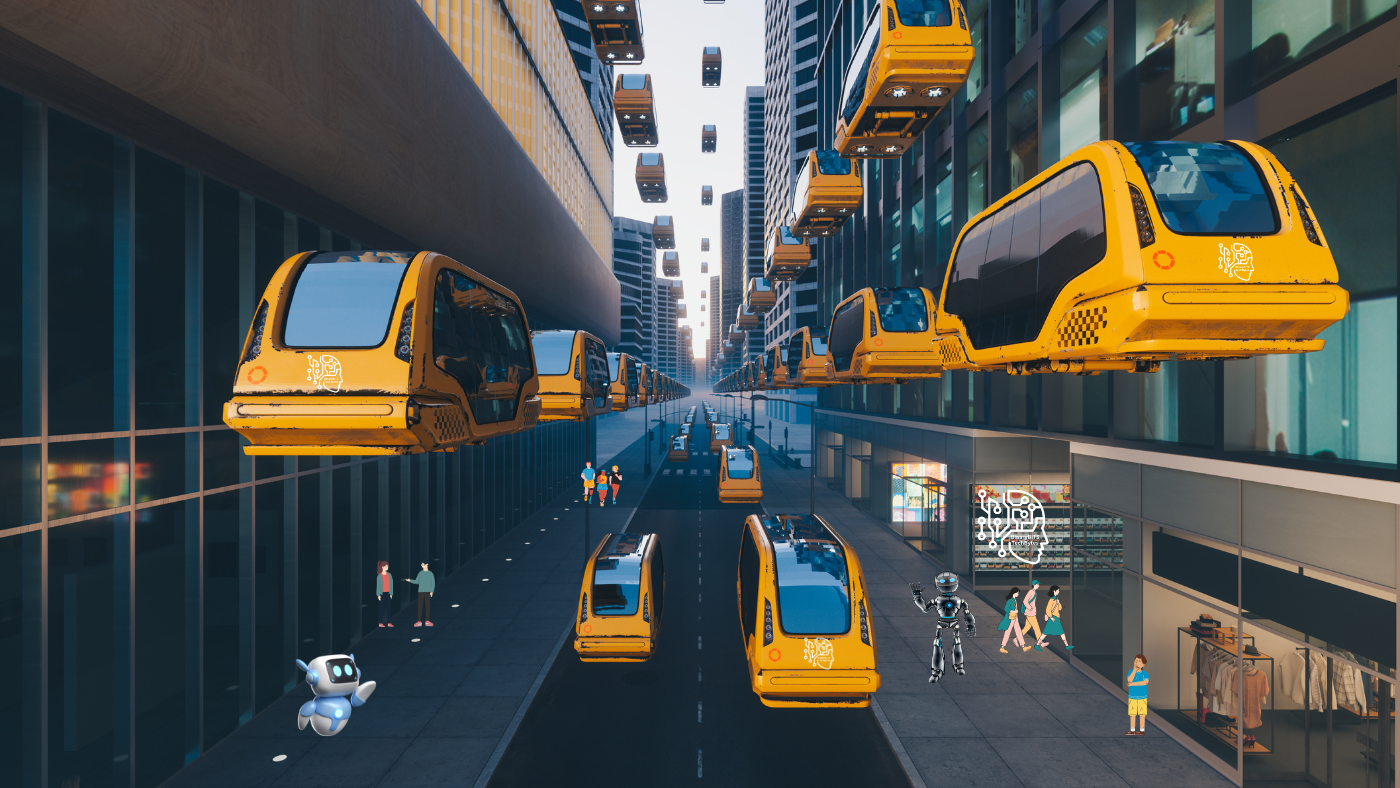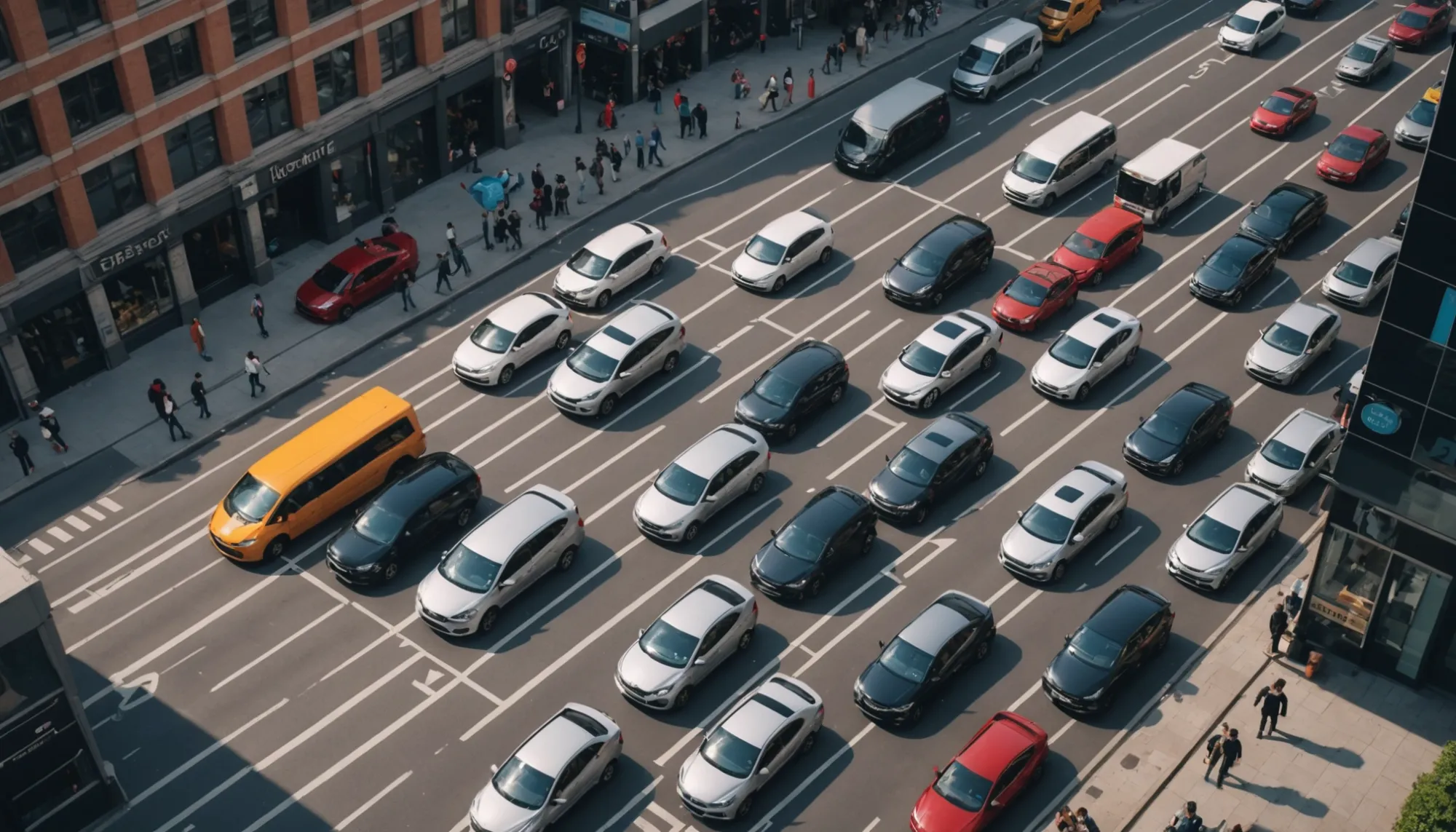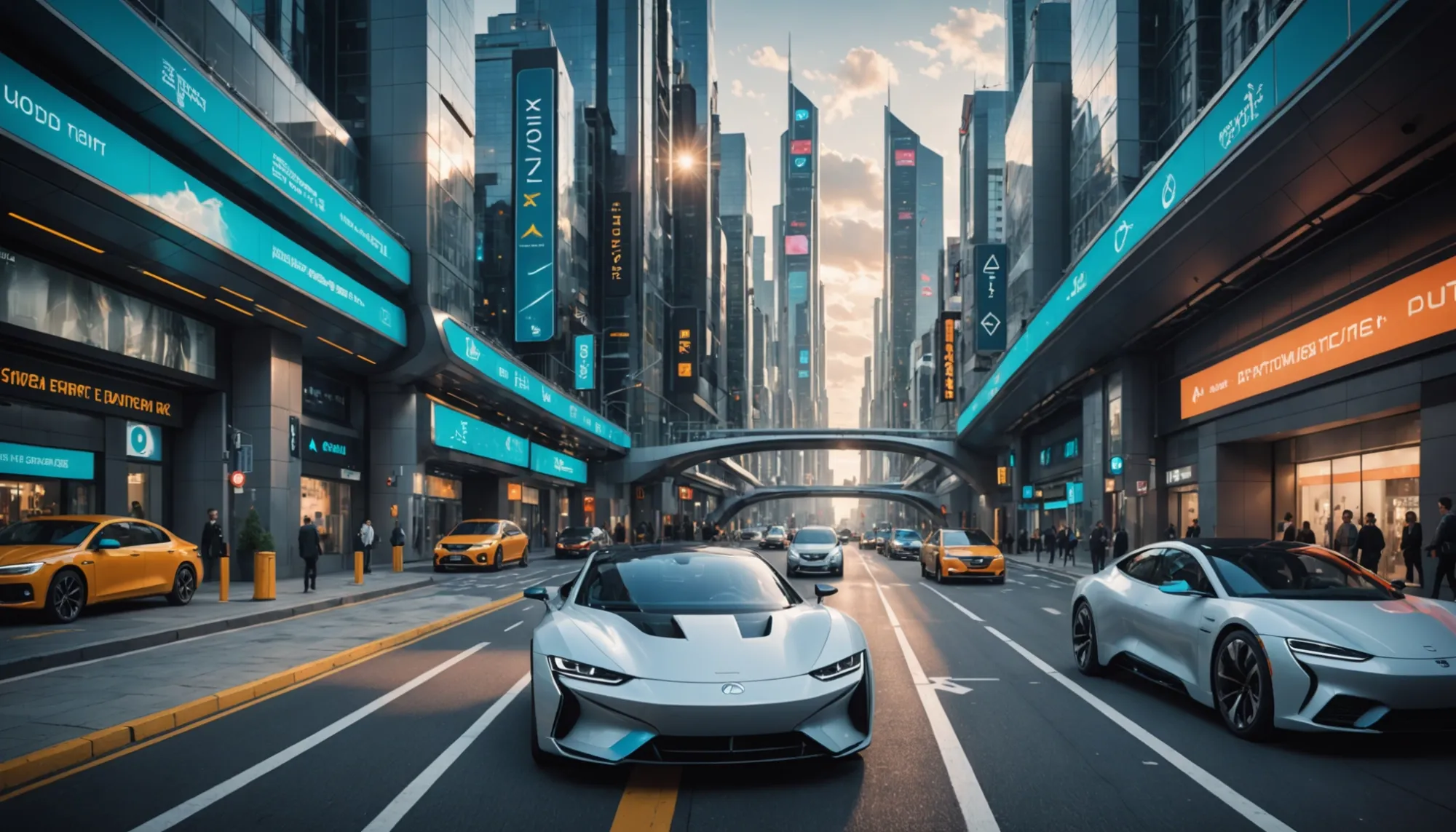Are Self-Driving Cars Really the Future? Autonomous Vehicles and What's Next
How close are we to making this futuristic dream a reality? The realm of autonomous vehicles is not simply a trendy topic. It’s a growing industry with significant implications for our society.

As we live in a world dominated by smartphones and rapid technological change, the concept of self-driving cars captures our imagination. How close are we to making this futuristic dream a reality? The realm of autonomous vehicles is not simply a trendy topic. It’s a growing industry with significant implications for our society. Let’s take a look and explore the current state of autonomous vehicles, the challenges they face, and what the future may hold.
The Current State of Autonomous Vehicles
The journey toward autonomous vehicles has been ongoing for decades, but the past ten years have seen remarkable progress. Key players in the automotive and tech industries, such as Tesla, Waymo, and Uber, are at the forefront. These companies are not just building cars that can drive themselves; they're transforming transportation as we know it.
Self-driving cars are classified into six levels of automation, from Level 0 (no automation) to Level 5 (full automation). Currently, most vehicles available to consumers range between Level 2 and Level 3. For example, Tesla's Autopilot and GM's Super Cruise can perform tasks like lane-keeping and adaptive cruise control. However, a human driver must remain alert and able to take over at any moment.

These vehicles rely on a mixture of sensors, cameras, LIDAR, and AI algorithms. They must interpret vast amounts of real-time data about their environment, such as traffic signals and pedestrian movements. However, the reliability of these systems is a concern. While various pilot programs have shown impressive capabilities, high-profile accidents involving self-driving cars often capture the media’s attention and raise public skepticism.
"If you recognize that self-driving cars are going to prevent car accidents, AI will be responsible for reducing one of the leading causes of death in the world." - Mark Zuckerberg
"Once you trust a self-driving car with your life, you pretty much will trust Artificial Intelligence with anything." - Dave Waters
Key Players in the Autonomous Vehicle Space
The world of self-driving cars is buzzing with competition and new ideas. Let's check out some of the main companies leading the way in this exciting field:
- Tesla - Tesla has made headlines for its advanced Autopilot feature. They gather data from millions of miles driven by its customers, continuously refining their self-driving capabilities. As of 2023, Tesla claimed that their vehicles were achieving over 20 million miles of autonomous driving per day.
- Waymo - Google's spinoff, Waymo has established itself as a leader in autonomous technology. They currently operate a fully autonomous taxi service in Phoenix, Arizona. This service offers a glimpse into a future where self-driving cars could become a common mode of transportation.
- Ford and General Motors - Major car manufacturers like Ford and GM are heavily investing in autonomous driving tech. Ford plans to invest $29 billion in electric and self-driving vehicles in 2025, showcasing their commitment to staying competitive.
- Uber and Lyft - These ride-sharing titans are also venturing into self-driving technologies. With significant investments, both companies are exploring how autonomous vehicles can be integrated into their existing services, potentially revolutionizing urban transport.
While these companies are prominent, numerous startups like Aurora and Nuro are also working on innovative autonomous solutions, pushing the boundaries of what is possible.

The Benefits of Autonomous Vehicles
If fully developed, self-driving cars could dramatically change our transportation system. Here are some of the key benefits:
1. Safety Improvements
Safety is a significant advantage of autonomous vehicles. The National Highway Traffic Safety Administration (NHTSA) reports that approximately 94% of crashes are caused by human error. By eliminating human mistakes, self-driving cars could drastically reduce accident rates, potentially saving thousands of lives each year.
2. Increased Accessibility
Self-driving cars offer newfound mobility for those who cannot drive, such as the elderly or disabled. For instance, a report from the American Association of Retired Persons (AARP) states that about 1 in 4 Americans age 65 and older do not drive. Autonomous vehicles could empower these individuals, enhancing their access to essential services.
3. Traffic and Congestion Management
With their advanced navigation systems, autonomous vehicles can communicate with one another, optimizing traffic flow. According to the Texas A&M Transportation Institute, traffic congestion costs the U.S. economy over $166 billion annually. Improved traffic management could reduce delays and emissions significantly.
4. Enhanced Mobility
Imagine rethinking the daily commute. With autonomous vehicles, passengers can use travel time for work or leisure activities. A survey by Deloitte found that 70% of commuters would prefer to work during their commute. This shift could redefine how we view travel time.

Examining the Challenges
Despite their potential, autonomous vehicles face numerous challenges that could slow down their adoption. Here are some critical obstacles:
1. Regulatory Hurdles
The deployment of autonomous vehicles requires a rework of existing transportation regulations. Governments must create safety standards while promoting innovation. Different regulations across regions create confusion and delays for companies trying to launch their products.
2. Public Perception and Trust
Public skepticism remains a barrier. High-profile accidents involving self-driving vehicles have shaken public faith. According to a survey by AAA, about 60% of Americans are afraid to ride in a fully self-driving vehicle. Building trust requires transparency and reliable safety data.
3. Technological Limitations
Though today's technology brings unprecedented achievements and possibilities, it also has some major limitations that cannot be overlooked.
Autonomous vehicles, despite their advanced sensors and algorithms, struggle with unpredictable human behavior, which can vary dramatically from one individual to another. Human drivers often make spontaneous decisions based on emotions, distractions, or situational awareness that can be difficult for AI systems to predict and react to appropriately. This unpredictability poses a significant challenge for self-driving technology, as it must be able to anticipate a wide range of potential actions from other road users, including erratic maneuvers by pedestrians, cyclists, and other vehicles.

In addition to the complexities of human behavior, autonomous vehicles face difficulties in inclement weather conditions. Rain, snow, fog, and ice can severely impair the performance of sensors such as cameras and LIDAR, which are essential for detecting and interpreting the vehicle's surroundings. For instance, heavy rain can obscure visibility and lead to inaccuracies in object recognition, while snow accumulation can obscure lane markings, making it challenging for the vehicle to navigate safely. These environmental factors force the necessity for major improvements and further advancements in technology to bring a vehicle's ability to operate safely, in a variety of weather conditions.
Further still, the complexity of urban infrastructures presents another layer of difficulty for autonomous vehicles. Cities are often characterized by intricate road networks, various traffic signals, and numerous signs, all of which must be interpreted correctly by the vehicle's AI. A study conducted by researchers at MIT found that self-driving cars have particular difficulty navigating roundabouts and busy intersections, where quick decision-making and adaptability are crucial. The presence of multiple lanes, merging traffic, and the need to yield to pedestrians further complicates the situation, highlighting the need for continuous improvement in the algorithms that govern these vehicles' behavior.
Researchers and engineers are actively working on developing more sophisticated machine learning models that can better understand and predict human behavior in real-time. Enhancing sensor technology to improve performance in adverse weather conditions is a major priority, as is creating more advanced mapping systems that can accurately represent complex urban environments. But, we are not quite at the point yet where we can rely on vehicles to operate safely and efficiently in a world that is often unpredictable and chaotic.
4. Road Infrastructure
Many roads are designed for human drivers, not automated ones. Upgrading current infrastructure is essential for optimizing the functioning of self-driving vehicles. A report from the International Transport Forum suggests heavy investing in smarter traffic signals, road signs and curbing and paving sensors to aid autonomous navigation.

The Future of the Autonomous Vehicle Industry
The future of autonomous vehicles is approaching at lightning speed. Here are some trends that are shaping the industry:
1. Integration with Smart Cities
As cities become smarter, and connectivity becomes more reliable (see our post on 5G Advanced Connectivity), autonomous vehicles will play a vital role in transportation. Greater coordination between smart infrastructure and self-driving technology could improve travel efficiency and reduce congestion.
2. Ongoing Research and Development
Investment in autonomous technology will continue to grow exponentially. By 2030, the autonomous vehicle market is projected to reach $557 billion, according to Allied Market Research. Expect exciting advancements in AI, machine learning, and sensor technology as companies strive to enhance vehicle performance.
3. The Growth of Autonomous Delivery
The logistics industry is ready for some automation action. Companies like Amazon are pouring money into self-driving delivery tech, which could totally change last-mile logistics and shake up the usual business models. According to a McKinsey report, these autonomous deliveries might slash logistics costs by as much as 30%.
4. Evolution of Ride-Sharing Services
Autonomous vehicles are going to change the game for ride-sharing. Companies such as Uber and Lyft might start using self-driving cars, which could mean cheaper rides for everyone and make getting around easier for all of us.
5. Ethical Considerations
As technology progresses, society will face ethical dilemmas regarding decision-making in self-driving vehicles. How should an autonomous car respond in an unavoidable accident? Addressing these questions will be vital as autonomous vehicles integrate into everyday life.

The Road Ahead (pun intended)
Exploring the world of self-driving cars is both super exciting and a bit tricky. Tech is moving fast (many would say too fast), and it will change how we get around. But there are still some incredibly big bumps in the road, like updating the rules, solving environmental and infrastructure factors, further advancements in AI reasoning and prediction accuracy and probably, and most importantly, getting people on board with the reassurance that autonomous vehicles are 100% safe and reliable.
The future of driverless cars depends on how well we handle these issues. With more innovation and lots of conversation, the dream of self-driving cars could soon be a regular part of our lives, changing the way we travel and live. Are we that far off from vehicles propelling in mid-air along invisible lanes in the sky? Hopefully yes. We haven't perfected anything on the ground yet but, when you think of how quickly technology is advancing, it may be just on the horizon. As we keep pushing ahead, each step gets us closer to making autonomous vehicles an everyday norm. That all being said, nothing can replace the feel and thrill of driving. As I close off this post, I can't help but share an excerpt of one of my favourite Rush song's, Red Barchetta:
Share with us in the comments about your thoughts of autonomous vehicles and whether you are ready to rely on them. Happy driving!






